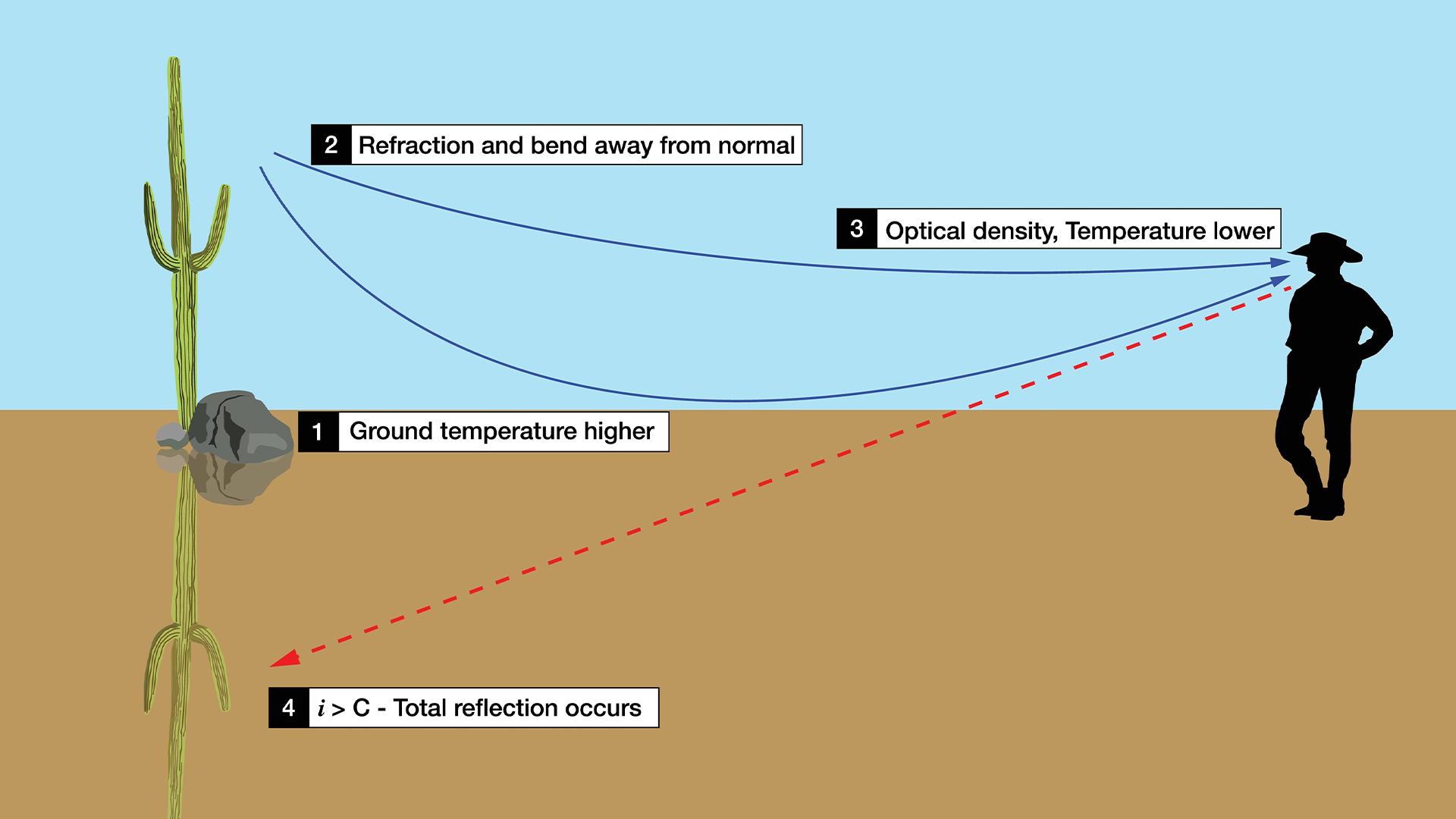How do mirages work?
What are mirages and why does this optical phenomenon cause us to see reality differently?

Mirages have a reputation for deceit. The classic example is the oasis in the desert. Or there's the obstructed view of the iceberg that may have confused the Titanic's captain. The legendary ghost ship, the Flying Dutchman, is also a mirage. But what is a mirage? And are the images that dance on hot roads, stretches of desert, and the sea surface really figments of the imagination, or are they images of real things?
The answer lies in the way the eye interprets the bending light that produces these images.
"It's not an optical illusion," Anthony Young, an astronomer at San Diego State University, told Live Science. That's the thing people get wrong about mirages. The mirage is an image of a real thing — it can even be photographed — but it's often a distorted image, and it's easy to misinterpret. Viewers "don't know what it is, so they misidentify it as something familiar," Young said. For instance, in the desert, mirages that reflect the sky are often misinterpreted as a pool of water.
Even if we misinterpret the mirage, a question remains: How did an image of a real object end up in the wrong place?
The short answer is refraction, the bending of light rays as they travel through different materials. Mirages happen as light waves travel through air at different densities.
Related: What would happen if the speed of light were much lower?
When light travels through the same material, it typically travels in a straight line," Xin Tong, a doctoral student in optical imaging at Caltech told Live Science. But when the light encounters a different material, it will bend toward the higher density. Air density depends on temperature, so when light travels through air at different temperatures, it bends toward the cooler air, which is denser.
Get the world’s most fascinating discoveries delivered straight to your inbox.
This creates two kinds of mirages. The first, a superior mirage, is what you see in the spring and summer when the sea is much cooler than the summer's hot air, Tong said. It's what historians suspect happened over freezing water the night the Titanic sank. In either case, the air closest to the water is colder than the air above it. The air gets warmer as you move away from sea level. This creates a temperature and density gradient, causing the light reflected by an object — like a ship, an iceberg or a nearby island — to bend.
The light bending toward the colder, sea-level air creates the mirage. It causes the object to appear higher than it really is, Tong said. That's because your eye expects light to travel in a straight line, so it interprets the object as in a different spot because of the bending light. When these superior mirages are particularly vivid and changing, which can happen over the open ocean, they also go by the Italian name "fata morgana," or "Morgan the Fairy." The Flying Dutchman is suspected of being a fata morgana.
The other type of mirage, an inferior mirage, is what happens in the desert or on hot pavement when the surface and nearby air are warmer than the air above it. To see these mirages, you need to be above the warmest air layer. And light coming from above bends upward toward the cooler air. Again, because the eye anticipates that light will travel in a straight line, it interprets the image as lower and inverted, Tong said. This is how an image of the sky can appear like a water surface on the desert floor.
In both cases, seeing the mirage is highly dependent on position and receiving angle. A small change in position can cause the optical phenomenon to disappear, Tong said.
Inferior mirages are easier to find if you know where to look. But the more spectacular mirages can be finicky. "Superior mirages are only seen sometimes in an interval of a few centimeters," Young said. And there's really a very short window for them to appear — only 10 to 15 minutes. But they're "nice to look at when you can find them," he said.

Donavyn Coffey is a Kentucky-based health and environment journalist reporting on healthcare, food systems and anything you can CRISPR. Her work has appeared in Scientific American, Wired UK, Popular Science and Youth Today, among others. Donavyn was a Fulbright Fellow to Denmark where she studied molecular nutrition and food policy. She holds a bachelor's degree in biotechnology from the University of Kentucky and master's degrees in food technology from Aarhus University and journalism from New York University.




